INSIDE ISSUE 17.29 | July 20, 2018
NEWS: New state forensics lab could allay delays in justice
NEWS BRIEF: Sales tax holiday, oversight input, emergencies, conservation and potholes
COMMENTARY, Brack: Trump on Russia makes S.C. GOP leaders squirm
SPOTLIGHT: Charleston Animal Society
MY TURN, Echols: U.S. drags feet on finishing nuclear disposal site
FEEDBACK: Teaching kids to swim makes a difference
MYSTERY PHOTO: Building features detailed brickwork
S.C. ENCYCLOPEDIA: Sassafras Mountain
New state forensics lab could allay delays in justice
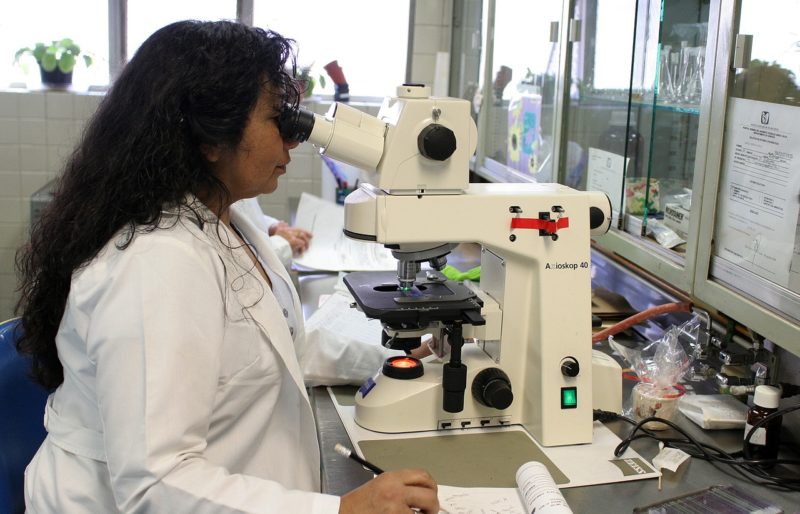
By Lindsay Street, Statehouse correspondent | The state’s top crime lab will get a complete overhaul after years of using 21st century technologies in a building built before DNA testing became a standard of law enforcement. Struggles to process evidence promptly have led to backlogs while local agencies wait for thousands of evidence reports, delaying trials, insurance claims and, ultimately, justice.
Last month, lawmakers approved a 2018-19 budget proviso that puts $54 million toward a new State Law Enforcement Division laboratory near its headquarters on Broad River Road in Columbia. The one-time money was taken from unallocated money in a fund that is normally used to pay down state debt. The building is slated to open by Spring 2021.

“There was never a question on the need for the new SLED laboratory building, [but] it was more about when and how,” said S.C. Sen. Hugh Leatherman, the Florence Republican who chairs the Senate Finance Committee. “The current structure simply does not meet the space and technical needs of a modern 21st century statewide forensic laboratory and the services the lab provides are invaluable to our county, city and state law enforcement. This is especially true for smaller counties and cities, as many rely on SLED’s lab exclusively for their laboratory and forensic testing.”
Fourteenth Circuit Solicitor Duffie Stone prosecutes cases in one of the state’s richest counties, Beaufort, and one of its poorest counties, Allendale.
“We’re depend on science in many, many cases,” Stone told Statehouse Report. “These rural counties are totally dependent on SLED for giving them access to that.”
And while the current lab is processing evidence and even recently won an award for its efficiency, it is getting more and more backlogged due to the aging structure.
“It’s important to local law enforcement to have results returned to them in a timely manner,” said S.C. Sen. Brad Hutto, D-Orangeburg. “Any delay in justice causes problems … Getting people answers to these questions that will allow the case to properly move forward. I don’t know that you can put a value on that. It’s just real important they get this done.”
The problem
The lab is more than 30 years old and unable to be adapted to current demands, SLED officials say.
 “It was designed in a time when DNA was not even a science,” lab director Maj. Todd Hughey told Statehouse Report. He said the building doesn’t allow for the renovations needed to make more room for equipment, and said they have struggled with handling equipment heat loads in the tight space.
“It was designed in a time when DNA was not even a science,” lab director Maj. Todd Hughey told Statehouse Report. He said the building doesn’t allow for the renovations needed to make more room for equipment, and said they have struggled with handling equipment heat loads in the tight space.
The changing technology isn’t the only problem facing the lab. There is also an increase in cases as more and more agencies need to identify synthetic drugs or seek to use DNA to make an arrest. Annually, SLED receives 20,000 cases per year across 309 agencies. Some of those cases could have upwards of 50 pieces of evidence each to analyze.
With so much evidence to sift through, the lab seeks to fast-track and prioritize crimes such as murder.
“We have to treat the cases coming into the cases through the door just like a hospital,” Hughey said. “We have to triage the cases.”
The lab currently has a six-month backlog for drug reports, which is up significantly from a few years ago when it took less than two weeks to issue a report, Hughey said. Toxicology used to be on a 30-day turnaround schedule. Now that time period has stretched into months.
Private labs can test evidence but that can be cost prohibitive, especially for smaller departments, Stone said.
“None of these smaller counties can afford that,” he said. “It adds up.”
On the ground
Berkeley County Coroner Bill Salisbury knows the backlog well.
“We send a lot of our evidence up to SLED, and they are very understaffed and very overloaded,” he told Statehouse Report. He said that it can take up to three months to receive a toxicology report back. The statewide laboratory processes every toxicology report across all agencies, and a majority of DNA and drug testing in the state.
This not only can put justice in limbo, but it also puts bereaved families in limbo, Salisbury said.
“Without a death certificate, you can’t get your insurance policy payout,” he said.
Law enforcement could be unable to make arrests in a case during the wait time and, for suspects waiting for evidence of exoneration, they can spend time awaiting delayed trials either out on bond or in jail, lawmaker Hutto said. Stone echoed those comments.
“The quicker we get scientific evidence, the better it is for everyone. From prosecution standpoint, delay never helps me,” Stone said. “We need to have all that evidence and it needs to be as fresh as possible.”
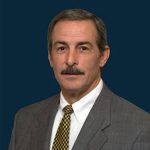
Around the state, there is an unofficial policy that all an agency has to do is call and ask for results to be expedited — a policy confirmed by both SLED Chief Mark Keel and Salisbury.
“I can call and tell them, ‘This is a priority,’ and they will do it quicker but I don’t want to abuse that privilege,” Salisbury said.
Keel said the new lab will be built with future renovations in mind with an open floor plan that will allow the agency to adapt to changing technologies.
“Although SLED got the funding and the legislature was so gracious to us to do it and they know we’re a great steward of dollars, this money we got for this lab is the chiefs, the solicitors and the coroners,” Keel said. “We only get one shot at $54 million … We’re going to do it right and make everybody proud.”
Keel said they will make decisions whether to hire additional staff when the lab is up and running.
- Have a comment? Send to: feedback@statehousereport.com
NEWS BRIEFS
Sales tax holiday, oversight input, emergencies, conservation and potholes

By Lindsay Street, Statehouse correspondent | Is South Carolina’s sales tax holiday a poor tax policy?
That’s the claim from a new report by the national tax policy think tank Tax Foundation, which calls such state holidays “gimmicks” that “distract policymakers and taxpayers from genuine, permanent tax relief.”
![]()
But before you get too excited about buying that new laptop or back-to-school clothes, the report says sales tax holidays fail to promote economic growth, discriminate arbitrarily among products, can mislead consumers about savings, cause costly complexity and instability, and are not an effective means of relief for low-income consumers.
“If policymakers want to save money for consumers, then they should cut the sales tax rate year-round,” the report said.
South Carolina has the 17th highest sales tax in the nation at 6 percent. Tennessee, which has no income tax, has the highest at 9.46 percent.
In other recent news:
Public input sought. The S.C. House Legislative Oversight Committee is seeking public input on five agencies being studied by the committee. Those agencies are the: Aeronautics Commission; Department of Corrections; Department of Mental Health; Department of Motor Vehicles; and the Wil Lou Gray Opportunity School.
The committee is asking the public to fill out a survey about the agencies. The survey seeks information on public thoughts on the agencies’ online presence. Click here to participate in the survey. Deadline to participate in the survey is Aug. 20.
S.C. among least prepared for emergency. Gov. Henry McMaster and a few other preparedness experts will likely disagree with a new report from a fuel additives company that says South Carolina is among the bottom 20 states prepared for a natural disaster.
Gold Eagle ranked South Carolina 37th from the top. Iowa was ranked first for its natural disaster preparedness. Texas was ranked last in the report. Rankings are based on number of disasters, funding, response and infrastructure.
For the birds (and everyone else). Audubon South Carolina’s Silver Bluff Sanctuary in Aiken County is now permanently protected by a conservation easement, thanks in part to an $807,000 grant from the S.C. Conservation Bank and a donation by the National Audubon Society. The legal easement is held by the Lowcountry Land Trust in partnership with the Aiken Land Conservancy. Silver Bluff is free and open to the public, and features 3,300 acres with 20 miles of public trails with stunning Savannah River views. More information.
Potholes wreck government vehicles, too. Every person who has felt the need to apologize to his or her car after hitting a big pothole knows the collapsed asphalt can do real damage. In the second quarter of this year, the South Carolina Insurance Reserve Fund paid nearly $783,000 to government agencies for claims relating to potholes. Read more here.
BRACK: Trump on Russia makes S.C. GOP leaders squirm

By Andy Brack, editor and publisher | It’s been pretty easy to vote Republican in South Carolina for the last two decades thanks to the recurring mantra about less government and lower taxes.
 But now with President Donald Trump’s European Summer Vacation blitzkrieg across Brussels, London, Scotland and Helsinki, mainstream, old-school Republicans are finding support of the Trump GOP to be somewhat uncomfortable.
But now with President Donald Trump’s European Summer Vacation blitzkrieg across Brussels, London, Scotland and Helsinki, mainstream, old-school Republicans are finding support of the Trump GOP to be somewhat uncomfortable.
“Elections have consequences,” one longtime state GOP analyst observed. “Actions have consequences. This is not helping.”
That’s because the president looked too cozy with the Russian leader, Vladimir Putin. While many people in the Palmetto State may not pay much attention to global politics, decades of Cold War rhetoric still make just about anything Russian with the exception of vodka to be suspect.
When an American president who constantly shouts “no collusion” takes sides with the Kremlin over the American intelligence community about a Russian cyberattack on our election system, South Carolinians take note.
“South Carolina is a conservative state and voters are comfortable with the Cold War rhetoric,” observed Clemson political scientist David Woodard. “That is why the cozy Russia talk was disturbing. If Trump had been aggressive, no one would have cared.”
What should worry South Carolina GOP politicians, even with Trump’s backtracking after a fusillade of criticism about what happened in Finland, is whether past and future support of Trump will affect how voters react to their state or local campaigns this year.
If GOP voters are gullible enough to forget what Trump said in Helsinki, it may not matter. But if their gut reaction caused even a small percentage of voters to question whether they should cast ballots for a Trump-backed politician, there could be trouble at the polls in November — even in South Carolina.
Bottom line: Trump has put South Carolina Republicans in a sticky situation with what sports enthusiasts would call an unforced error.
Furman University political scientist Danielle Vinson said the state’s GOP leaders can’t be silent without consequences.
“Doing nothing says they are either okay with trashing U.S. allies and refusing to take Russia’s efforts to foment division and attack and undermine our electoral integrity and security, or they are burying their heads in the sand and hoping it goes away,” she said. “They need to speak out in clear terms against this kind of behavior, and they can do that even when they support some of the president’s policy positions on these things. “
Gibbs Knotts, chair of the political science department at the College of Charleston, added, “Republicans don’t need to weigh in on every event, but they should express an opinion if they think the country’s values are at stake or if disagreeing with the president in the best interest of the state or nation.”

Most at risk over the president’s embrace of a country most believe remains a foe is GOP Gov. Henry McMaster, who wrapped his primary campaign around Trump, dubbing him to be one of the country’s greatest presidents.
Imagine if Putin feels emboldened to invade the country of Georgia or some other global hot spot and if the S.C. National Guard is called up to respond. That could turn out badly for McMaster. Or what if an ongoing federal investigation into the cyberattack gets worse and roosts closer to the president? Even worse for McMaster. Or if Trump’s trade war and its tariffs start harming South Carolina jobs? It would be more bad news for McMaster, who faced four candidates in a primary and was forced into a runoff by a GOP newcomer.
“Most all of the state’s GOP candidates have hitched their wagons to Trump,” Knotts said, “This is a risky general election strategy for a few reasons. We don’t know the final word from [Special Counsel Robert] Mueller. Also, the economy could get worse and that would impact Trump’s approval ratings.”
South Carolina needs bold leaders and leadership. Now is a time for Republican leaders to sound off loudly about the president’s unacceptable behavior and demand action to hold Russia accountable for what it did — and what Russians are probably still trying to do — to impact our election process. If our leaders do nothing, you should let them know how you feel about that at the polls.
- Have a comment? Send to: feedback@statehousereport.com.
SPOTLIGHT: Charleston Animal Society
 We’re pleased today to shine our spotlight on a new underwriter, Charleston Animal Society, leader in the effort to make Charleston County a safe place for animals. Now the society is working to expand its Charleston success statewide to energize the state to reshape its 300-plus shelters and animal organizations into a no-kill network that stretches from Walhalla to Little River to Daufuskie Island.
We’re pleased today to shine our spotlight on a new underwriter, Charleston Animal Society, leader in the effort to make Charleston County a safe place for animals. Now the society is working to expand its Charleston success statewide to energize the state to reshape its 300-plus shelters and animal organizations into a no-kill network that stretches from Walhalla to Little River to Daufuskie Island.
Safe and healthy communities, neighborhoods and families don’t just happen – they’re built. “No Kill – No Harm – No More” shines a spotlight on animal abuse and family violence, which are often perceived and treated as separate issues. However, animal abuse is often the tip of the iceberg to larger issues in the home, such as child abuse, elder abuse or domestic violence.
- South Carolina’s most honored charity four years in a row
- National model for success
- Southeast’s only AAHA-accredited combined clinic and shelter
- Focused on solving problems rather than reacting to them year after year
- Publishes Carolina Tails, the largest pet magazine in S.C.
- No Kill. No Harm. No More. is a “movement” comprised of two major initiatives: No Kill Charleston and No Kill South Carolina.
- Learn more about the Charleston Animal Society and its work to create a network of humane network for the animals that bring joy to our lives.
ECHOLS: U.S. drags feet on finishing nuclear disposal site
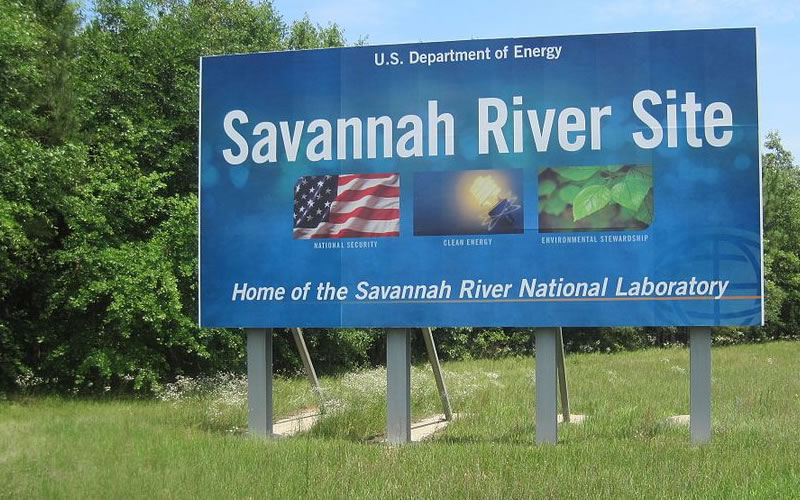
Editor’s note: Tim Echols, vice chairman of the Georgia Public Service Commission, wrote this commentary for our sister publication, GwinnettForum. With it dealing with a South Carolina facility, we thought it would be of policy interest here.
By Tim Echols, Georgia Public Service Commission
JEFFERSON, Ga. | I have spent the last eight years crisscrossing Georgia, meeting constituents, listening to concerns, discussing energy issues, speaking to civic clubs, advancing technology—things you would expect from an elected regulator. One common concern that people have is the destiny of used nuclear material—whether from our nuclear power plants or our nation’s surplus weapons cache.

Plutonium is the active ingredient, obviously. Most of the country would be surprised to learn that a large plutonium disposal facility is under construction just over the Georgia-South Carolina state line at the Department of Energy’s Savannah River Site (SRS). Because the United States has dragged its feet in completing the plant, don’t be surprised if Mr. Putin questions President Trump about it.
The little-known facility began because the U.S. and Russia signed an agreement back in 2000 for our two countries to mutually destroy 68 metric tons of surplus weapons-grade plutonium, the equivalent of 17,000 nuclear weapons. That’s not a typo. It’s 17,000!
The decision was subsequently reaffirmed by succeeding administrations to eliminate 34 metric tons of U.S. surplus plutonium in rough parallel with Russians, which agreed to eliminate a similar quantity of Russian surplus plutonium. And believe it or not, the Russians further agreed, for the first time, to allow for verification of the disposition process by the International Atomic Energy Agency.
Like a gun buyback program in dangerous neighborhoods that results in weapons being melted down or rendered unusable, the agreement with Russia required the plutonium to be destroyed or materially altered so that it could never again be reused for weapons purposes. The chosen method of disposal was by burning up the plutonium as mixed oxide (MOX) fuel in commercial nuclear reactors.
As time has passed, the Russians constructed the necessary facilities and infrastructure to begin disposing of their surplus plutonium, while the U.S. facility at SRS is only about 70 percent complete. Citing increased costs, the Department of Energy wants to abandon construction of the MOX facility and pursue a completely new and risky disposition method which doesn’t convert the plutonium to a form that can never again be used for weapons purposes. As a result, the Russians have refused to proceed, and large quantities of surplus weapons-grade plutonium remain in storage in each country.
Yes, I believe that Mr. Putin will ask the president about the project. He’ll make it clear that if the U.S. changes its mind on disposing of the plutonium in accordance with the bilateral agreement that the two countries signed, Russia will do the same. And can you blame him?
We have so much surplus weapons-grade material that the MOX facility will be operating for at least 20 years. The facility is nearly three-quarters complete and provides thousands of jobs for the region. Reactors around the U.S. could utilize the material. But most importantly, it represents a tool to eliminate the equivalent of 8,500 Russian nuclear weapons. And that makes all the difference.
Tim Echols is vice chair of the Georgia Public Service Commission.
- Have a comment? Send it to: feedback@statehousereport.com.
FEEDBACK
Teaching kids to swim makes a difference
To the editor:
![]() Enjoyed the story about swimming lessons. Up here in Lancaster, we started almost 25 years ago teaching elementary school kids to swim in the 4th grade. It is a partnership with the school district, USC Lancaster (also the Y since they started operating the pool for USCL last year with funding from the J Marion Sims Foundation).
Enjoyed the story about swimming lessons. Up here in Lancaster, we started almost 25 years ago teaching elementary school kids to swim in the 4th grade. It is a partnership with the school district, USC Lancaster (also the Y since they started operating the pool for USCL last year with funding from the J Marion Sims Foundation).
The results in reducing drowning deaths to zero have been phenomenal.
— Steve Willis, Lancaster, S.C.
Send us your thoughts. We love hearing from our readers and encourage you to share your opinions. But you’ve got to provide us with contact information so we can verify your letters. Letters to the editor are published weekly. We reserve the right to edit for length and clarity. Comments are limited to 250 words or less. Please include your name and contact information.
- Send your letters or comments to: feedback@statehousereport.com
MYSTERY PHOTO: Building features detailed brickwork
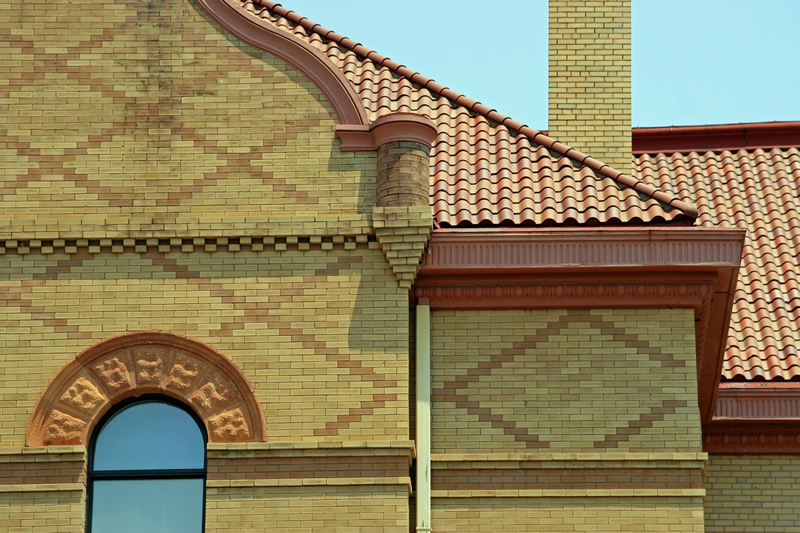
A longtime reader sent in this close-up shot of the brickwork of a South Carolina building that shows intricate detail and decorative work from the turn of the last century. Don’t’ let the red tiled roof set you off course. But let us know if you think you know the location of this iconic building by sending your guess to: feedback@statehousereport.com. And don’t forget to include your name and the town in which you live.
Our previous Mystery Photo
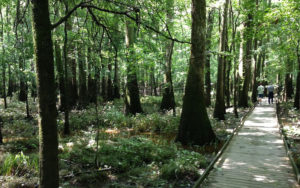 Our July 13 mystery might have made your skin crawl – if you thought about all of the bugs you will encounter in the summer in the Congaree National Park in lower Richland County, which is where the photo was taken. The mystery was particularly tough because it looks like a lot of other great places (and guesses by readers) in South Carolina, including the Francis Beidler Forest near Harleyville, Walterboro’s city swamp park and Edisto Gardens in Orangeburg.
Our July 13 mystery might have made your skin crawl – if you thought about all of the bugs you will encounter in the summer in the Congaree National Park in lower Richland County, which is where the photo was taken. The mystery was particularly tough because it looks like a lot of other great places (and guesses by readers) in South Carolina, including the Francis Beidler Forest near Harleyville, Walterboro’s city swamp park and Edisto Gardens in Orangeburg.
Congratulations to these sleuths who figured out the location: Ashley Aldebol of Irmo; Charles E. Davis of Aiken; Bill Segars of Hartsville; Amy Wiesehahn, Robert Feinstein, Jay Altman and Jean Prothro, all of Columbia; Curt Rone of West Columbia; George Drumbor of Charleston; Steve Willis of Lancaster; Irving Rosenfeld of James Island; George Graf of Palmyra, Va.; and Christian Twitty of Bluffton.
Graf provided a little more context: “According to nationalparks.org, situated along the meandering Congaree River in central South Carolina, Congaree National Park is home to champion trees, primeval forest landscapes, and diverse plant and animal life. This 22,200-acre park protects the largest contiguous tract of old-growth bottomland hardwood forest remaining in the United States. Known for its giant hardwoods and towering pines, the parks floodplain forest includes one of the highest canopies in the world and some of the tallest trees in the eastern United States.
“A joint venture between the Old-Growth Bottomland Forest Research and Education Center and the Columbia Museum of Art, the Congaree National Park Art & Science Project provided 5 integrated, standards-based experiences that engaged more than 1,100 students (many minority, low-income, and first-time visitors) in the art and science of soil. Two youth interns helped with program delivery.”
Send us a mystery: If you have a photo that you believe will stump readers, send it along (but make sure to tell us what it is because it may stump us too!) Send to: eedback@statehousereport.com and mark it as a photo submission. Thanks.
S.C. ENCYCLOPEDIA
HISTORY: Sassafras Mountain
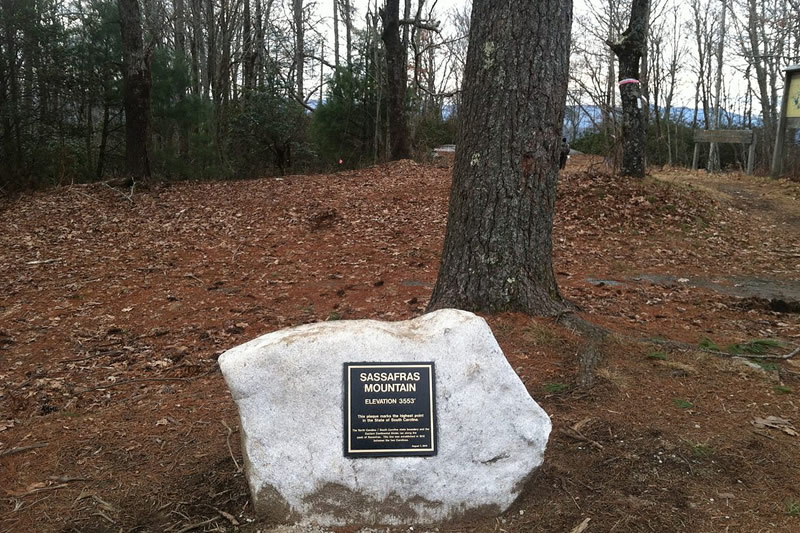
S.C. Encyclopedia | Sassafras Mountain, which lies in Pickens County along the South Carolina / North Carolina border, rises to 3,554 feet above sea level and is the highest point in South Carolina. While the summit is privately owned, it is included in the Appalachian Trail system and is a prime site for hikers. The mountain and surrounding areas contain miles of trails from which to view majestic mountain streams, waterfalls, and exposed rocks that give evidence of the area’s geologic history.
The geology of Sassafras Mountain reflects millions of years of plate tectonics. It lies within the inner Piedmont belt and is thought to be part of a continental fragment that attached or even reattached North America during the Middle Ordovician at a time of continental collision and mountain building called the Taconic Orogeny (mountain-building episode). Metamorphism continued during subsequent collisions in the Devonian period (Acadian Orogeny) and in the Pennsylvania to Permian periods (Alleghenian Orogeny).
During these episodes North America collided with the European plate (Baltica) and the African plate, respectively. These collisions, which generated tremendous heat and pressure, transformed sedimentary and igneous rocks into schists and the distinctive Henderson gneiss that underlies Sassafras Mountain. The gneiss is a large, lens-shaped igneous intrusion, or pluton, containing folds and textures that reflect a long history of intense pressure and heat from the collision of these landmasses. The region is also thought to have undergone extensive Mesozoic extensional faulting and later isostatic uplift from the Oligocene to the Miocene. These geologic processes caused active stream down-cutting and the resultant modern scenic gorges and waterfalls that surround Sassafras Mountain.
— Excerpted from an entry by Carolyn H. Murphy. To read more about this or 2,000 other entries about South Carolina, check out The South Carolina Encyclopedia, published in 2006 by USC Press. (Information used by permission.)
ABOUT STATEHOUSE REPORT
Statehouse Report, founded in 2001 as a weekly legislative forecast that informs readers about what is going to happen in South Carolina politics and policy, is provided to you at no charge every Friday.
- Editor and publisher: Andy Brack, 843.670.3996
- Statehouse correspondent: Lindsay Street
More
- Mailing address: Send inquiries by mail to: P.O. Box 22261, Charleston, SC 29407
- Subscriptions are free: Click to subscribe.
- We hope you’ll keep receiving the great news and information from Statehouse Report, but if you need to unsubscribe, go to the bottom of the weekly email issue and follow the instructions.
© 2018, Statehouse Report. All rights reserved.


